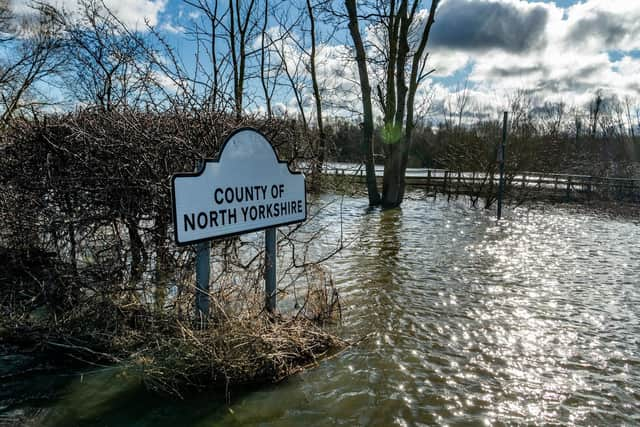This is why dredging Yorkshire's rivers might not prevent flooding
Yorkshire Post readers Paul Muller, from Sandal near Wakefield, and Peter Hyde, of Driffield, both wrote to the editor this month to question why the Environment Agency is not investing more cash and resources in dredging schemes.
Mr Muller said: "The solution to flooding in the country is exactly the same as the house drain solution; that is to unblock our rivers by dredging and so remove all the blockages to the smooth flow of water from the hills to the sea. Many years ago farmers did this job for us. It is impossible to slow the flow of water downhill - it is too heavy."
Advertisement
Hide AdAdvertisement
Hide AdMy Hyde agreed, writing: "Once again many acres of land and homes are flooded due to high rainfall, and yet the river authorities can’t grasp that much of it is due to rivers and waterways not being dredged. Years ago, there was a team who continually spent time doing the maintenance of our streams and rivers. In the name of saving money and protecting wildlife, human beings and their properties are being put at risk."


What is dredging?
Dredging involves using machinery to excavate sediment from a river bed in order to improve and re-shape the river. Rivers often silt up if this material is left to gather, impeding the flow of water. Dredging of navigable waterways is useful for boat traffic. It can also be used for land reclamation projects. Rivers with wider and deeper channels can store more water and their capacity is increased.
When does it work well?
The best example of successful dredging cited by pro-dredgers is the work completed in the Somerset Levels after the devastating floods during the winter of 2013-14, when many farmers lost their livelihoods after their fields were submerged.
River embankments quickly overtopped, and it took months for the water to drain away.
Advertisement
Hide AdAdvertisement
Hide AdThe Environment Agency then dredged two local rivers and frequent maintenance of wider channels is still undertaken. The Levels have not experienced serious flooding since these measures were introduced.
Yet flooding expert Alastair Chisholm, who is director of policy for the Chartered Institution of Water and Environmental Management, claimed on an Environment Agency blog that dredging prior to 2013 wouldn't necessarily have saved the Levels.
"Research at the time indicated that given that succession of storms, dredged rivers in Somerset wouldn’t have prevented the floods. Any additional capacity and conveyance created would have been far outweighed by the amount of water that fell and flowed down the catchment. What dredged channels would have done - and will do in future - is reduce the duration that flood water sat on farmland causing considerable damage to crops and homes."
So the dredging was primarily done to mitigate the effects of overflows, rather than prevent them.
Why doesn't it always work?
Advertisement
Hide AdAdvertisement
Hide AdBecause some rivers are simply too fast-flowing for dredging to have a significant impact on their capacity.
The Levels are low-lying, but in Yorkshire, many rivers carry rainwater and melting snow from upland areas, and these waterways can quickly swell and become overwhelmed.
Rivers such as the Ouse, Aire and Wharfe suffer less from sedimentation and blockages because they 'self-scour' - the speed of the water prevents deposits from building up.
When their channels are expanded artificially, this is referred to as engineering to complement the construction of flood defences.
Advertisement
Hide AdAdvertisement
Hide AdDredging can even be counter-productive, as faster-flowing water can place a strain on bridges even if the capacity of the river is greater.
So what can be done instead?
Alastair Chisholm points out that human intervention in landscape management has exacerbated the effects of heavy rainfall.
Rivers fill more quickly because we farm upland areas more intensively, remove hedgerows, concrete over fields for housebuilding, fell trees, and burn peat moorland. This prevents water retention in the hills above our towns and cities and stops rain being absorbed naturally into the ground.
The water then flows downstream and peaks more rapidly.
Flood risk managers now focus on 'slow the flow' techniques - building dams upstream, planting trees, sinking storage ponds and even introducing beavers, as has happened in the North York Moors near Pickering. Peat bogs, which can store large amounts of rainwater in the hills, are often tampered with to promote habitats for game birds by commercial shoots, but these need to be protected in their natural form.
Advertisement
Hide AdAdvertisement
Hide AdDredging can be effective when deployed appropriately - but it's not a magical solution for larger rivers.
The Environment Agency spent £22million on dredging in 2016 - but later admitted they use the method on a case-by-case basis and that it was not a 'catch-all' intervention suitable in all river catchments.